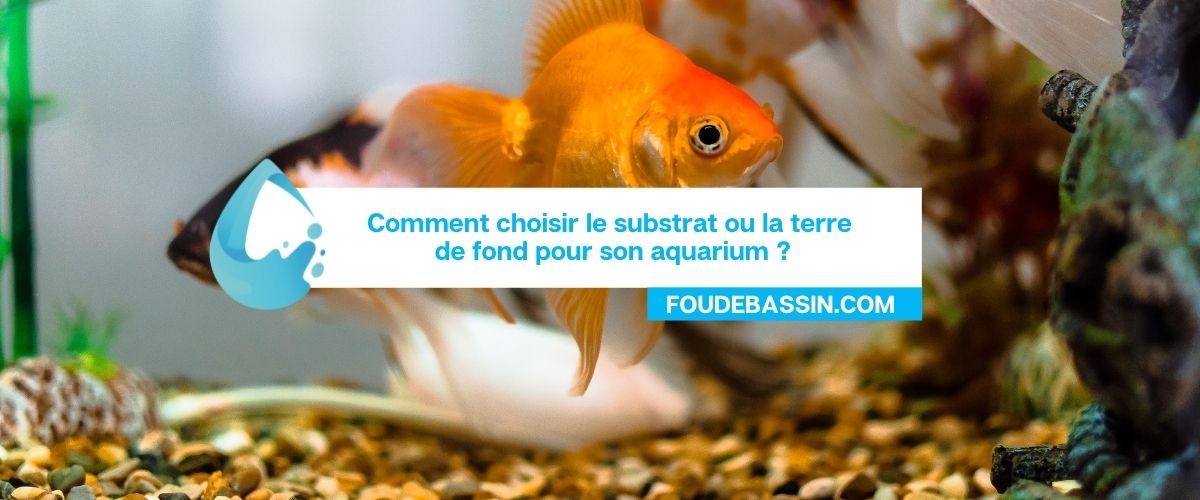Retrouvez ici les indispensables et meilleures ventes pour nos propriétaires de bassin.
Retrouvez ici les indispensables et meilleures ventes pour nos propriétaires de bassin.

There is a wide variety of different sizes, shapes and colors of substrates. But, most of the time, we find three types of materials: pebbles, sand and gravel. In this article, we review the pros and cons of these materials. So read on to carefully choose the substrate for your new aquarium.
The variety of aquarium substrate materials is impressive! So, it is not always easy to find your way around.
Let's take a look together at the most commonly used substrates, their pros and cons...
Pebbles are very popular among professional aquarists. Not only because they exist in all sizes, but also because they are available in a wide variety of materials (rock, glass, plastic, etc.).
However, the space left between the various rollers represents a drawback. In themselves, these discrepancies are not a problem. But over time, dirt, uneaten food, and feces fall into these holes and accumulate there.
Thus, it develops bacteria that are sources of nitrites, which affects the quality of the water and the health of your fish. Also, plants find it difficult to root in pebbles. Therefore, we advise you to favor the following two solutions…
Loire sand is the best aquarium substrate. It is even a safe bet that is suitable for all types of aquariums. What's more, sand is considered the most natural substrate, as most aquatic animals come from an environment where they are found.
Not to mention that the grains of sand leave little or no space between them, which prevents the accumulation of excrement. Thus, sand is also one of the easiest substrates to clean.
Be careful, however, not to use coral sand for a freshwater aquarium. Coral is made up of small crushed shells that will release limestone. Limestone will increase the hardness of your water, which is bad for most freshwater aquariums.
Measuring between 2 and 5 mm, the gravels have a similar appearance to pebbles, without the drawbacks. Gravel is available in a wide range of materials and colors. And since the spaces around each pebble are minimal, food cannot be stored there. Any waste that falls on the gravel can therefore be easily removed during weekly maintenance.
However, be careful with quartz gravel (or sand) because this substrate is sharp... is therefore not recommended.
Are you wondering if it is really necessary to choose a substrate for your aquarium? Well the answer is yes! Because it will host denitrifying bacteria that will help your aquarium to purify itself naturally.
Finally, avoid buying fluorescent yellow, red, green or blue gravels that are sometimes found in garden centers. Most of the time, these substrates are artificially colored and their paints release elements that are harmful to the health of your fish.
Need to know how much substrate to place at the bottom of your aquarium? So, browse our blog to read our article dedicated to this subject!
Aquipond Greenstab - Natural treatment against pond algae It is a natural product that helps limit algae at any time. It also has a prevent...
View full detailsReduces the layer of silt in the pond by at least 40% Easy to use with less impact on biodiversity Prevents fermentation, bad odors. pH ...
View full detailsOrganic dye to block plant growth by limiting photosynthesis ORGANIC PRODUCT NON TOXIC TO HUMANS (DIVING) AND FISH. 100% NATURAL AND BIODE...
View full detailsThe positive effects of barley straw have been known to water enthusiasts for a long time. But currently barley straw is difficult to find and i...
View full detailsReduces at least 40% of the layer of silt in the pond Easy to use with less impact on biodiversity Prevents fermentation, bad odors. ...
View full details
Leave a comment